
by Chris Verlinde | Jun 23, 2018
As the heat indicies rise, there a number of organizations that offer great learning experiences about our local Natural Resources!! While it is great to have the outdoor hands-on learning, the afternoon heat can feel suffocating. Here are a couple of nature centers that you can visit to get out of the heat.
Apalachicola National Estuarine Research Reserve is home to the Reserve’s Nature Center, located at 108 Island Drive, in East Point Florida. Inside the air-conditioned Nature Center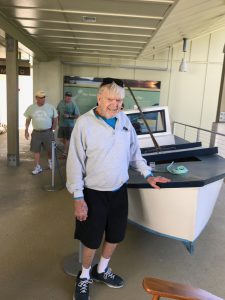 are many interactive displays and tanks with live local animals. At one end of the center, there is a large mural that takes you from the upper-parts of the Apalachicola River to the Gulf of Mexico, There are many native animals identified on the mural. There is an area with plenty of artifacts to keep the young and old naturalist busy.
are many interactive displays and tanks with live local animals. At one end of the center, there is a large mural that takes you from the upper-parts of the Apalachicola River to the Gulf of Mexico, There are many native animals identified on the mural. There is an area with plenty of artifacts to keep the young and old naturalist busy.
The interactive cultural displays are really interesting and provide much information about the fishing industry that Apalachicola is known for throughout Florida.
The Reserve features a many trails that lead throughout the property and many to the water. The Apalachicola National Estuary Reserve is one of 29 National Estuarine Research Reserves in the U.S. Each reserve is protected for “long-term research, water quality and habitat monitoring, education, and coastal stewardship.”
The Reserve is open to the public Tuesday through Saturday from 9 am until 4 pm, admission is free.
Photos provided by Chris Verlinde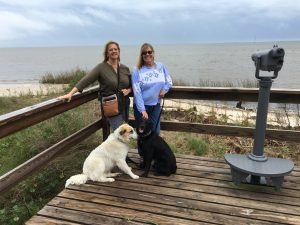 Heading to the west, near the town of Freeport Florida, you will find the E.O. Wilson Biophilia Nature Center. This amazing place will keep you and your family entertained for hours. If you plan to go, the center is only open to the public on Thursday and Friday during June and July from 9 am until 2 pm. The cost is $8.00 for adults, $5.00 for children ages 3-12 and free for those 2 and under. The rest of the year, the staff are dedicated to teaching local students from surrounding school districts about biodiversity in Northwest Florida. As you enter the exhibit building there is a tribute to the famous naturalist E.O Wilson, whose work is the inspiration for center. Dr. Wilson is dedicated to teaching others about the importance of conservation of biodiversity. He coined the term “biophilia” which means “the love of all living things.” The exhibit hall features many different displays on the cultural and natural resources in the area. The center features a reptile room, classrooms, an amphitheater, porches to enjoy your lunch and the “World of Wonder Exhibit.” which is a Science on a Sphere – a giant globe that utilizes technology to teach about the planets, our weather, and more.
Heading to the west, near the town of Freeport Florida, you will find the E.O. Wilson Biophilia Nature Center. This amazing place will keep you and your family entertained for hours. If you plan to go, the center is only open to the public on Thursday and Friday during June and July from 9 am until 2 pm. The cost is $8.00 for adults, $5.00 for children ages 3-12 and free for those 2 and under. The rest of the year, the staff are dedicated to teaching local students from surrounding school districts about biodiversity in Northwest Florida. As you enter the exhibit building there is a tribute to the famous naturalist E.O Wilson, whose work is the inspiration for center. Dr. Wilson is dedicated to teaching others about the importance of conservation of biodiversity. He coined the term “biophilia” which means “the love of all living things.” The exhibit hall features many different displays on the cultural and natural resources in the area. The center features a reptile room, classrooms, an amphitheater, porches to enjoy your lunch and the “World of Wonder Exhibit.” which is a Science on a Sphere – a giant globe that utilizes technology to teach about the planets, our weather, and more.
Animals that can be found at the center include: birds of prey, bobcats, turtles and snakes, a red-cockaded woodpecker, a fox, and chickens. A short walk outside, you will find an authentic cracker house (with snakes!) and an organic garden.
The E.O. Wilson Biophilia center is a wonderful place to visit, check it out soon!!
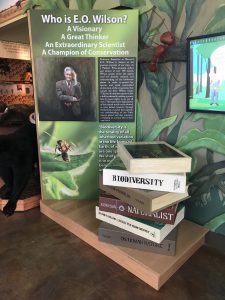
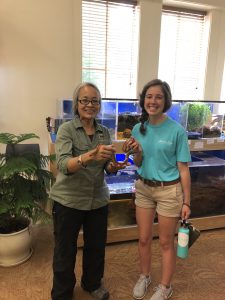
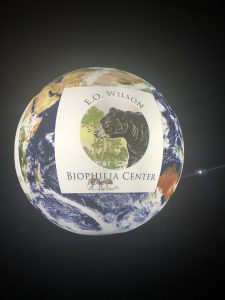
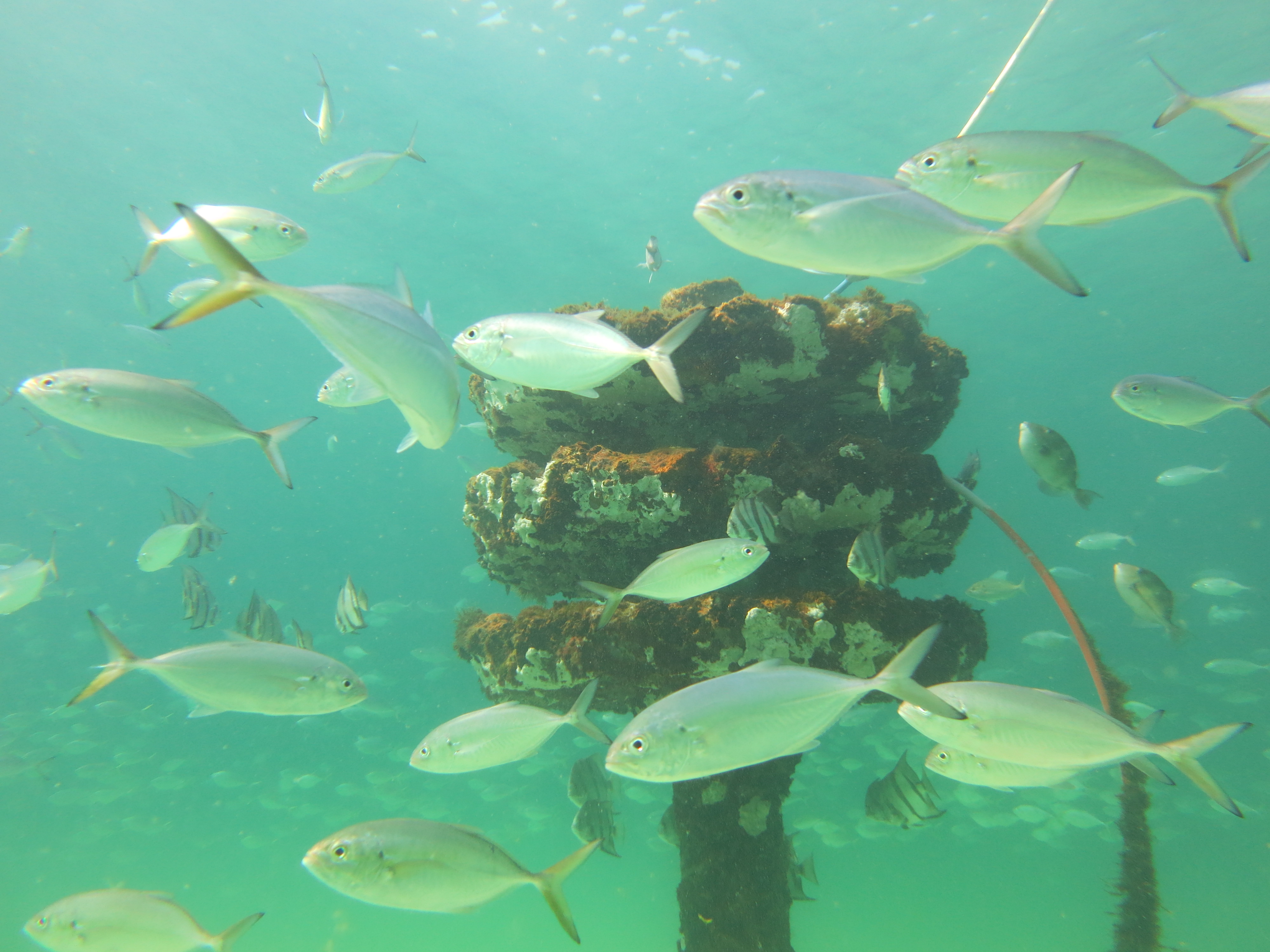
by Chris Verlinde | Jul 29, 2017
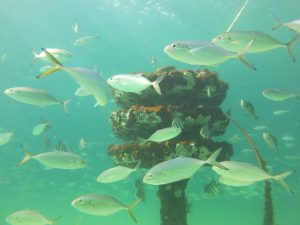
Photo Credit: Mike Sandler
Join the UF/IFAS Natural Resource Extension Agents as we explore the Navarre Beach Marine Sanctuary.
Thursday, August 17, 2017 from 9 am until 1 pm.
Register today at: https://nbsnorkel.eventbrite.com
The Navarre Beach Marine Sanctuary consists of 30 reef structures in the Gulf of Mexico. The whole site is as large as a football field. Reefs are located in 6 to 15 feet of water.
Participants will enjoy a brief introduction about the history of the reefs and economic impacts for the community. We will then head out to snorkel the reefs and observe the wildlife that can found in the area.
Participants will be expected to swim at least 375 feet to access the site and be experienced swimmers/snorkelers. Participants may see marine life such as: sea turtles, octopi and many fish species that inhabit the reef. Participants will need to bring a mask, snorkel and fins, flotation device such as a boogie board or a buoyancy compensator vest, sunscreen, etc. Cost is $20.00, lunch is included.
We will meet at the Sea Oat Pavilion which is at the second Gulf side parking lot in the NB Marine Park. There are picnic tables, restrooms, changing area and shower at the Pavilion.
This adventure is weather dependent, refunds (minus the Eventbrite fee) will be provided if we have to cancel due to inclement weather conditions or poor water visibility. If you have questions, please contact Chris Verlinde, 850-623-3868 or chrismv@ufl.edu.
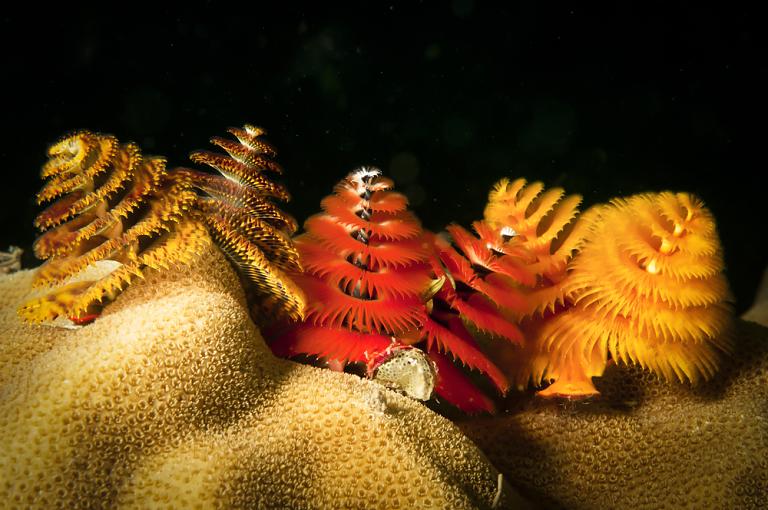
by Chris Verlinde | Dec 19, 2016
The holiday season is a special time for most of us! There are many creatures that live under the sea that represent many of our holiday traditions.
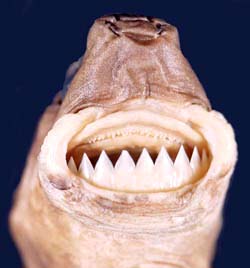
Photo Credit: Fl. Museum Of Natural History, George Burgess
Small cookie cutter sharks are found in very deep water during the day, at night they migrate up the water column to feed. Cookie cutter sharks attract their prey with lighted photophores. Photophores are lighted organs located on the lower part of the shark. Small fish are attached to the glow, larger fish searching for prey get close enough to the shark and the shark bites the prey. The cookie cutter shark has specialized sucking lips that attach to the victim. The shark then spins its body around and leaves a cookie cutter shaped hole in the fish.
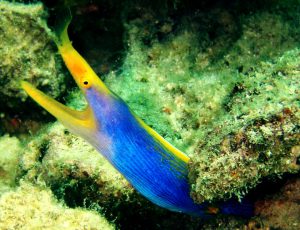
Photo credit: Wikimedia Commons
Ribbon Eels are found in the Indio Pacific. They have long slender bodies and move like ribbons in and through the crevices reefs. They eat live fish. To view a YouTube video of ribbon fish feeding, click here.
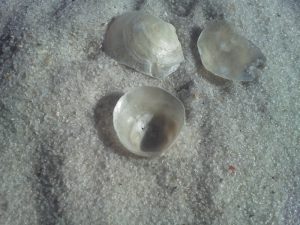
Photo credit: Chris Verlinde
Jingle shells get their name as a result of their shells that when shaken together make a jingle like sound. Jingle shells can be found along the beaches of NW Florida. The shiny iridescent shell is strong and very attractive. Many shell collectors use the shells to make jewelry and wind chimes.
Jingle shells are bivalves and live attached to hard surfaces, just like oysters.
Jingle shells are filter feeders, meaning water is filtered through their gills for plankton.
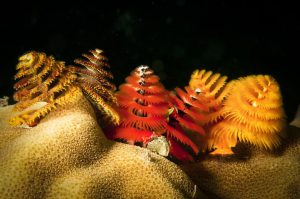
Photo credit: Wikimedia commons
Christmas tree worms are Christmas tree shaped worms that form burrows corals. The tentacles, which form the tree-like structures are used for feeding on plankton and to breathe. These plumed creatures are a type of polychaete worm.
Christmas tree worms come in many colors and can be found all over the world. They feed by using their feathery appendages, called radioles to capture phytoplankton that floats by the “feathers.”
Christmas tree worms are easily disturbed and will quickly vanish into their burrows as shadows or larger marine life pass by. They return quickly and continue with their sedimentary lifestyles in the coral.
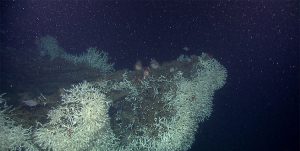
“Marine snow” falls gently on to a coral-covered shipwreck explored in the Gulf of Mexico in 2012 by the NOAA Ship Okeanos Explorer. Photo Credit NOAA
Marine snow gets its name as a result of the fluffy materials that resemble snow falling from the sky. Marine snow is decaying material from plants and animals that have died in the oceans. Marine snow may also include sand, fecal matter and inorganic dust.
Just like snowflakes, marine snow grows as it floats to the ocean depths. Marine snow is consumed by scavengers that live along the deep-sea floor bottom. Check out the video below showing the beauty of marine snow.
There are many more festive creatures that live in the sea. Have a wonderful Holiday Season!
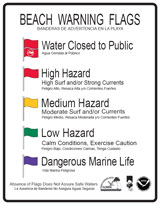
by Chris Verlinde | Apr 8, 2016
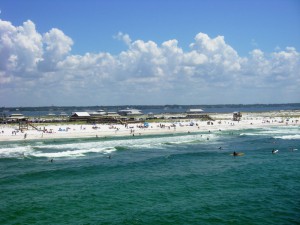
The sugary white sands along the Panhandle, attract millions of visitors to our area throughout the year. It is important for locals and visitors to understand and consider the following tips for safety at the beach.
The danger of rip currents far outweighs the danger of having a shark encounter. As a result of past storms, the nearshore sandbars along our beaches have changed and the frequency of rip currents has increased. A rip current is a turbulent, fast flowing current that can carry a swimmer out to sea very quickly. The currents are formed when water rushes out to sea in a narrow path (like a break in the nearshore sandbar or from an obstruction of the current caused by a groin or jetty or other type of barrier). Rip currents can last for a few hours or may be permanent; they usually exist when the surf is rough and after storms, but can occur on calm days.
Some signs of rip currents include:
- A difference in water color. The water may be murkier from increased sediments or appear darker because it is deeper.
- A channel of churning, choppy water.
- A line of foam, seaweed or debris being carried directly out to sea.
Rip currents can be difficult to spot. Wearing polarized sunglasses will help you recognize changes in water color. Click here to learn more about rip currents.
If you are caught in a rip current, try not to panic or swim against the current. Swim to the left or right of the current, parallel to shore until you are out of the current. Rip currents range in width from a few feet to many feet wide. If you can’t break out of the current, float calmly out until it ends, usually just beyond the breakers. Then swim diagonally to shore.
Remember, always use common sense and swim responsibly. For current surf conditions check out the National Weather Service rip current forecast.
Know the meaning of the beach warning flags:
 A double red flagmeans the water is closed to the public.
A double red flagmeans the water is closed to the public.- A single red flag means the surf is very dangerous and you should stay out of the water.
- A yellow flag indicates that you should take caution when in the water.
- A green flag indicates that conditions are safe for swimming.
- A purple flag means there could be dangerous marine life such as jellyfish.
When swimming at the beach it is important to remember that the Gulf of Mexico is a wilderness, not a swimming pool. Use common sense when enjoying the Gulf. Some safety tips to remember include:
- Swim near a life guard.
- Know your swimming abilities and limits, if you can’t swim stay out of the water.
- Swim in groups or use the buddy system; never swim alone.
- Be aware of weather conditions; get out of the water and away from the beach during electrical storms. Taking shelter in a building is best, but otherwise a car.
- Always enter the water, feet first every time!
- Don’t swim in murky waters or between dusk and dawn.
- Stay calm in the event of an emergency.
- Pay attention and know the meaning of beach warning flags. Pay attention to lifeguards.
- Avoid swimming in areas where people are fishing.
- To avoid being stung by a sting ray, shuffle your feet, this will stir up the sand and scare away sting rays.
- Always wear sunscreen or protect your skin with clothing.
- If you see someone in trouble, get help from a lifeguard, have someone call 9-1-1. Throw the victim something that will float and yell instructions on how to escape. Remember, many drown while trying to save someone from a rip current.
Follow these tips to help make a visit to the beach a safe one!
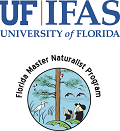
by Chris Verlinde | Jan 19, 2016
 The mission of the Florida Master Naturalist program (FMNP) is to promote awareness, understanding and respect of Florida’s natural environment. FMNP graduates, Paul Bennett and Charlie Lurton have both worked diligently through the permitting process to place living shorelines consisting of oyster shell bags and marsh plants along their coastal properties.
The mission of the Florida Master Naturalist program (FMNP) is to promote awareness, understanding and respect of Florida’s natural environment. FMNP graduates, Paul Bennett and Charlie Lurton have both worked diligently through the permitting process to place living shorelines consisting of oyster shell bags and marsh plants along their coastal properties.
Living Shorelines incorporate a range of natural structures to protect coastal shorelines from erosion and enhance habitat for wildlife. Oyster shell bags, biologs, plants and sand fill may be used or a combination of natural materials may be used in a living shoreline project. These projects provide “soft” shoreline protection that offers economic and ecological benefits to the property owner. They are recommended for use in low wave and erosional settings.
In higher wave energy areas, seawalls and bulkheads may be required for shoreline protection. These types of projects “harden” the shoreline, and do not allow for intertidal habitat and eliminate the natural slope of the shoreline. Hard structure projects can have a detrimental effect on nearby properties as wave energy is deflected from the structure and can increase erosion nearby, alter sand movement and decrease intertidal habitat.
Both Mr. Bennet and Mr. Lurton realized the importance and benefits of shoreline protection using natural materials, both men attributed this knowledge to their experiences in the FMNP. The FMNP graduates worked with the local branch of the Florida Department of Environmental Protection’s (DEP) Florida Coastal Office, Northwest Florida Aquatic Preserves, to obtain funding and permits for the projects. DEP’s Florida Coastal Office has worked with the US Fish and Wildlife Services’ Coastal Program to promote and support living shoreline projects across the Panhandle.
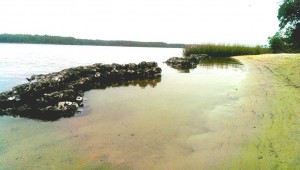
Oyster reef breakwater along the Shoreline of Bayou Grande, Charlie Lurton’s project. Photo credit: Zachary Shang
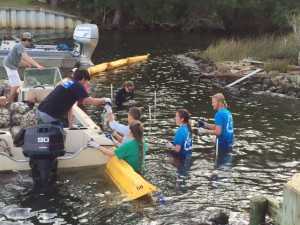
Installing the oyster reef breakwater along the shoreline of Paul Bennett in East Bay, Santa Rosa County, FL. Photo Credit: Beth Fugate
Mr. Lurton worked with seven of his neighbors to create 1,200 linear feet of shoreline. This project on Bayou Grande in Escambia County incorporated 39 oyster reefs, each built of 200 bags of recycled oyster shells. Each bag of recycled oyster shell weighs approximately twenty pounds for a total of 78 tons of shell! 11,300 native grasses and salt tolerant plants will be installed along the shoreline this year.
Mr. Bennet’s project along East Bay in Santa Rosa County consists of 5 reefs built along the mouth of a freshwater marsh located on his property for a total of 10 tons of shell. DEP’s Florida Coastal Office will determine if native grasses and plants are needed for the project in the future.
“The conversation for both of these projects started years before we were able install any materials so it’s rewarding to see them take hold,” said Zachary Schang, environmental specialist with the Northwest Florida Aquatic Preserves. “It was in large part due to the persistence of the property owners who wanted to deal with a natural problem using a natural solution.”
These types of habitat restoration projects allow for ecological and economic benefits for the property owners. The Fl. Master Naturalist Program promotes understanding and awareness of natural resources, these two graduates have demonstrated what it means to be a FMN.
Watch this newsletter for more about the FMNP and FMNP graduates. For more information about the FMNP and classes being offered in your area, check out http://www.masternaturalist.ifas.ufl.edu/.

 are many interactive displays and tanks with live local animals. At one end of the center, there is a large mural that takes you from the upper-parts of the Apalachicola River to the Gulf of Mexico, There are many native animals identified on the mural. There is an area with plenty of artifacts to keep the young and old naturalist busy.
are many interactive displays and tanks with live local animals. At one end of the center, there is a large mural that takes you from the upper-parts of the Apalachicola River to the Gulf of Mexico, There are many native animals identified on the mural. There is an area with plenty of artifacts to keep the young and old naturalist busy. Heading to the west, near the town of Freeport Florida, you will find the E.O. Wilson Biophilia Nature Center. This amazing place will keep you and your family entertained for hours. If you plan to go, the center is only open to the public on Thursday and Friday during June and July from 9 am until 2 pm. The cost is $8.00 for adults, $5.00 for children ages 3-12 and free for those 2 and under. The rest of the year, the staff are dedicated to teaching local students from surrounding school districts about biodiversity in Northwest Florida. As you enter the exhibit building there is a tribute to the famous naturalist E.O Wilson, whose work is the inspiration for center. Dr. Wilson is dedicated to teaching others about the importance of conservation of biodiversity. He coined the term “biophilia” which means “the love of all living things.” The exhibit hall features many different displays on the cultural and natural resources in the area. The center features a reptile room, classrooms, an amphitheater, porches to enjoy your lunch and the “World of Wonder Exhibit.” which is a Science on a Sphere – a giant globe that utilizes technology to teach about the planets, our weather, and more.
Heading to the west, near the town of Freeport Florida, you will find the E.O. Wilson Biophilia Nature Center. This amazing place will keep you and your family entertained for hours. If you plan to go, the center is only open to the public on Thursday and Friday during June and July from 9 am until 2 pm. The cost is $8.00 for adults, $5.00 for children ages 3-12 and free for those 2 and under. The rest of the year, the staff are dedicated to teaching local students from surrounding school districts about biodiversity in Northwest Florida. As you enter the exhibit building there is a tribute to the famous naturalist E.O Wilson, whose work is the inspiration for center. Dr. Wilson is dedicated to teaching others about the importance of conservation of biodiversity. He coined the term “biophilia” which means “the love of all living things.” The exhibit hall features many different displays on the cultural and natural resources in the area. The center features a reptile room, classrooms, an amphitheater, porches to enjoy your lunch and the “World of Wonder Exhibit.” which is a Science on a Sphere – a giant globe that utilizes technology to teach about the planets, our weather, and more.















